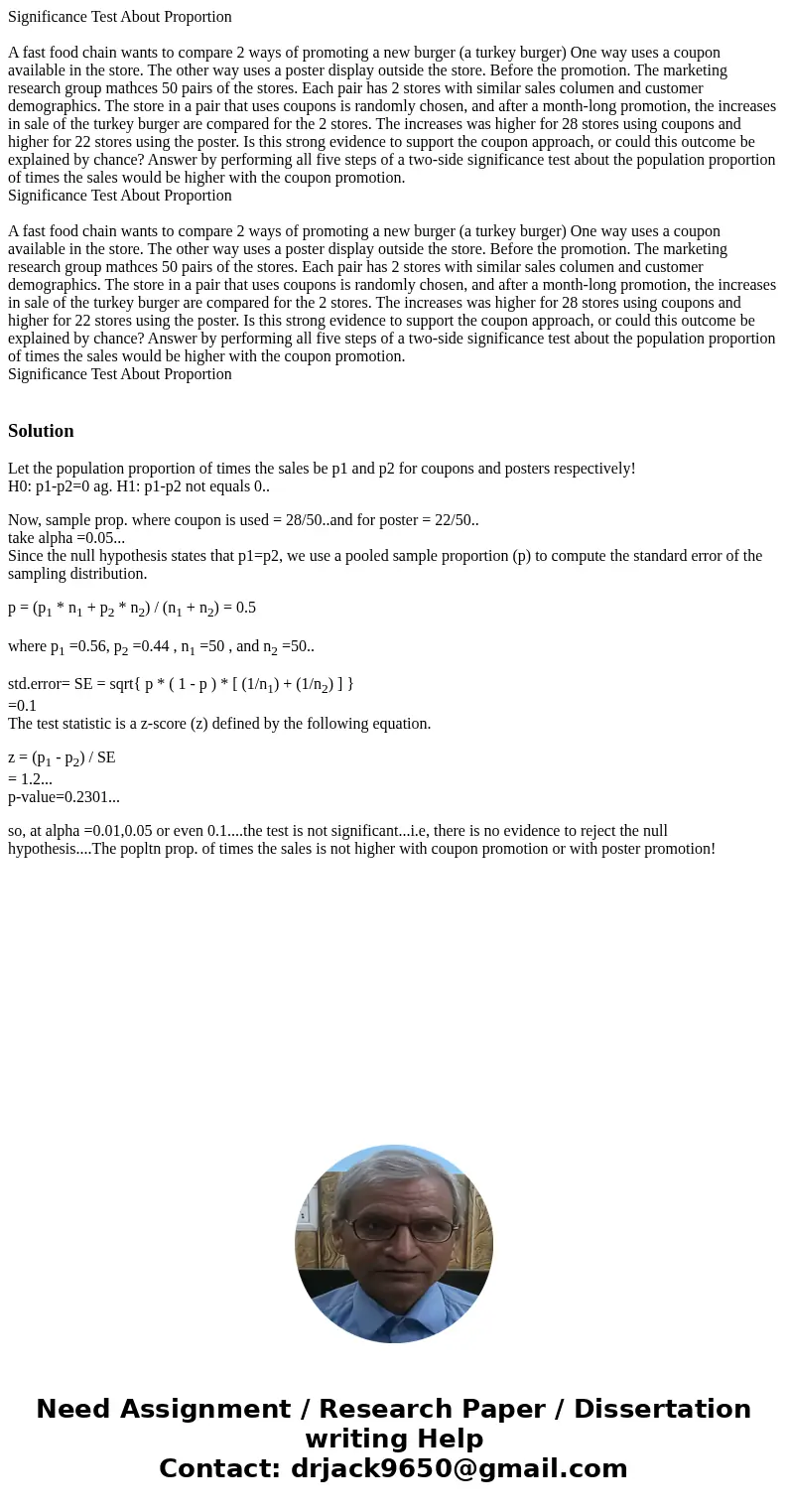Significance Test About Proportion
A fast food chain wants to compare 2 ways of promoting a new burger (a turkey burger) One way uses a coupon available in the store. The other way uses a poster display outside the store. Before the promotion. The marketing research group mathces 50 pairs of the stores. Each pair has 2 stores with similar sales columen and customer demographics. The store in a pair that uses coupons is randomly chosen, and after a month-long promotion, the increases in sale of the turkey burger are compared for the 2 stores. The increases was higher for 28 stores using coupons and higher for 22 stores using the poster. Is this strong evidence to support the coupon approach, or could this outcome be explained by chance? Answer by performing all five steps of a two-side significance test about the population proportion of times the sales would be higher with the coupon promotion.
Significance Test About Proportion
A fast food chain wants to compare 2 ways of promoting a new burger (a turkey burger) One way uses a coupon available in the store. The other way uses a poster display outside the store. Before the promotion. The marketing research group mathces 50 pairs of the stores. Each pair has 2 stores with similar sales columen and customer demographics. The store in a pair that uses coupons is randomly chosen, and after a month-long promotion, the increases in sale of the turkey burger are compared for the 2 stores. The increases was higher for 28 stores using coupons and higher for 22 stores using the poster. Is this strong evidence to support the coupon approach, or could this outcome be explained by chance? Answer by performing all five steps of a two-side significance test about the population proportion of times the sales would be higher with the coupon promotion.
Significance Test About Proportion
Let the population proportion of times the sales be p1 and p2 for coupons and posters respectively!
H0: p1-p2=0 ag. H1: p1-p2 not equals 0..
Now, sample prop. where coupon is used = 28/50..and for poster = 22/50..
take alpha =0.05...
Since the null hypothesis states that p1=p2, we use a pooled sample proportion (p) to compute the standard error of the sampling distribution.
p = (p1 * n1 + p2 * n2) / (n1 + n2) = 0.5
where p1 =0.56, p2 =0.44 , n1 =50 , and n2 =50..
std.error= SE = sqrt{ p * ( 1 - p ) * [ (1/n1) + (1/n2) ] }
=0.1
The test statistic is a z-score (z) defined by the following equation.
z = (p1 - p2) / SE
= 1.2...
p-value=0.2301...
so, at alpha =0.01,0.05 or even 0.1....the test is not significant...i.e, there is no evidence to reject the null hypothesis....The popltn prop. of times the sales is not higher with coupon promotion or with poster promotion!

 Homework Sourse
Homework Sourse